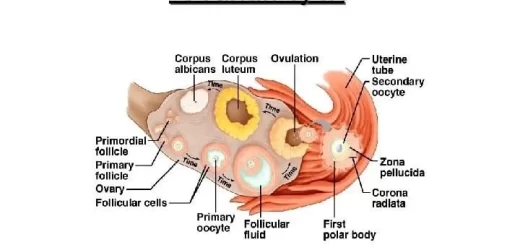Mineral metabolism, types, disorders, function of Sodium and Potassium
Metabolism is all the physical and chemical processes in the body that create and use energy, such as breathing, circulating blood, digesting food and nutrients, eliminating waste through urine and feces, and regulating temperature.
Mineral metabolism
Minerals are very essential for the human body, They have various roles in metabolism and body functions, They are important for the proper function of cells, tissues, and organs. Mineral metabolism disorders are abnormal levels of minerals in the blood.
Importance of studying mineral metabolism
- Many elements are important for neuromuscular activity, e.g. Na, K, Ca, Mg. etc.
- Some elements are integral parts of enzymes, e.g. Cu for tyrosinase, or activators for enzymes, e.g. Mg for hexokinase.
- Na, K, and Cl are major factors in controlling the acid-base balance and osmotic control of water balance.
- Some elements are present in important physiologic compounds, eg. Fe in hemoglobin, l2 in thyroxine and Co in vitamin B2.
- The balance between certain elements is important, e.g. calcium and phosphorus balance is important for ossification, potassium and calcium balance is important for muscular contraction, and excess dietary molybdenum may result in copper deficiency.
- The determinations of the levels of different elements in plasma, e.g. Na, K, Ca and Mg are important in the treatment of dehydration.
- Some elements are important in the problem of environmental pollution, e.g lead in the air, mercury in water, and cadmium due to smoking.
- Excessive intake of some elements in the diet, water, or by inhalation may lead to toxicity, e.g lead, mercury, cadmium, copper, and fluoride toxicity.
- Deficiency of certain elements may lead to specific clinical manifestations, e.g. iron deficiency leads to iron deficiency anaemia, iodine deficiency may lead to goiter, and calcium deficiency may lead to tetany,
Classification of minerals
The mineral elements present in the body are classified into:
I. Principal mineral elements (major elements or macronutrients): e.g. calcium, magnesium, sodium, potassium, phosphorus, sulfur, and chlorine.
II. Trace elements: These are elements present in small amounts, i.e. ug/g amounts or less. They are subdivided into three groups:
- Essential trace elements (micronutrients) e.g. iron, iodine, copper, zinc, manganese, cobalt, molybdenum, selenium, chromium, and fluorine.
- Possibly essential trace elements, e.g. nickel, tin, vanadium, and silicon.
- Non-essential trace elements, e.g. Aluminum, cadmium, arsenic, lead and mercury.
I. Principal mineral elements
Sodium
- Daily requirements: It usually varies between 5 to 15g as NaCl. Patients with hypertension require 1 g/day.
- Sources: As NaCl (table salt) is used in cooking foods.
- Absorption: Occurs mainly in the ileum.
- Distribution: About one-third of total body sodium (which is about 70 g) is present in the inorganic part of the skeleton. Most of the remaining sodium is found in the extracellular fluids.
- Plasma level: The plasma sodium level is varying between 135 to 150 mEq/L, with a mean of 145 mEq/L.
- Metabolism: Sodium metabolism is affected mainly by the aldosterone hormone which helps sodium reabsorption by the renal tubules
- Excretion: 95% of sodium is excreted by the kidney in the urine, and a little amount is excreted in the stools. Excretion through the skin by sweating is variable according to the atmospheric conditions.
Functions of sodium
- It is largely associated with chloride, bicarbonate, and phosphate in the regulation of acid-base equilibrium, e.g. (NaH₂PO₂/Na₂HPO4) and (H2CO3/NaHCO3).
- This element is the major component of the cations of the extracellular fluid, so it is important for the maintenance of the osmotic pressure of body fluid and thus protection of the body against excessive fluid loss.
- It is important for the normal irritability of muscle and the permeability of the cells.
Abnormal levels
A) Hypernatremia
This is a rare condition characterized by elevated plasma sodium levels. This condition may occur due to:
- Rapid administration of sodium salts by intravenous route.
- Cushing disease.
- Rapid loss of water as in cases of diabetes insipidus.
- During pregnancy due to placental hormones.
This condition is manifested clinically by hypertension and oedema.
B) Hyponatremia
This condition is characterized by low plasma sodium levels. This may occur due to:
- Chronic renal disease (salt-losing syndrome);
- Severe sweating.
- Addison’s disease.
This condition is manifested clinically as headache, nausea, diarrhea, and muscle cramps
Potassium
- Daily requirements: About 4 g.
- Sources: Chicken, beef, bananas, juice of oranges, and dried fruits
- Absorption: Mainly in the ileum.
- Distribution: Mainly potassium is intracellular.
- Plasma level: 3.5 – 5.3 mEq/L
- Metabolism: The kidney is the major organ regulating potassium metabolism, it is not only filtered at the glomeruli but there is also active secretion by the tubules under the effect of the aldosterone hormone.
- Excretion: Is mainly by the kidney and to a little extent in the stools and sweat.
Functions of potassium
It is mainly intracellular, so:
- It keeps the intracellular acid-base balance.
- It keeps the intracellular osmotic pressure.
- It is important for several metabolic functions, e.g. protein biosynthesis in the ribosomes, and as an activator for some enzymes, e.g. pyruvate kinase.
- It is important for normal muscle activity and contraction of the heart.
Abnormal levels
A) Hyperkalemia
This is increased plasma potassium level and this may be due to:
- Renal failure, dehydration, and shock.
- Addison’s disease.
- Excessive intravenous administration.
This condition is characterized clinically by cardiac and central nervous system depression in the form of bradycardia, ECG changes, mental confusion, and flaccid paralysis.
B) Hypokalemia
This is decreased plasma potassium level and may be caused by.
- Malnutrition and prolonged negative nitrogen balance.
- Gastrointestinal losses, e.g. diarrhea and fistulae.
- Postoperatively.
- Metabolic alkalosis.
- Cushing’s disease and intake of steroids.
- The excessive use of diuretics.
- During the treatment of diabetic ketoacidosis by insulin as this augments the formation of glycogen in the liver which retains with it potassium (as every 1 g of glycogen requires 0.36 of mmol potassium), so potassium is rapidly withdrawn from the extracellular fluid.
This condition is characterized clinically by muscle weakness, irritability, tachycardia, and ECG changes
Sodium-Potassium pump
The high concentration gradients of Na+ and K+ that exist across the cell membrane are maintained by the activity of an energy-requiring pump that transports Na+ out of the cell in exchange for K+. The energy is provided by ATP generated in the cell. For every molecule of ATP changed into ADP+P, three Na+ ions are pumped outward and 2 K+ ions are pumped inward.
The enzyme used in this reaction is Mg-activated Na+-K+ ATPase. Ouabain (a cardiac glycoside) inhibits the Na-K pump. Na-K pump may be used at the same time in the compulsory cotransport of Na and solute molecules. So, no extra energy is required, eg glucose, and amino acids absorption in the intestine.
You can download Science Online application on Google Play from this link: Science online Apps on Google Play
Metabolism, Energy balance, Basal metabolic rate & Factors affecting respiratory exchange ratio
Serine function, Tyrosine, tryptophan, Pellagra (Vitamin B3 Deficiency) & Nucleotide metabolism
Benefits of taking Vitamin B complex & vitamin C, sources of Vitamin B6, Biotin & Lipoic Acid
Vitamins types & function, Sources of vitamin A & Deficiency of vitamin E
Water soluble vitamins, Vitamin B complex benefits, side effects, sources & deficiency
Function of Calcium, phosphorus, Copper, Zinc & Iodine in human body




